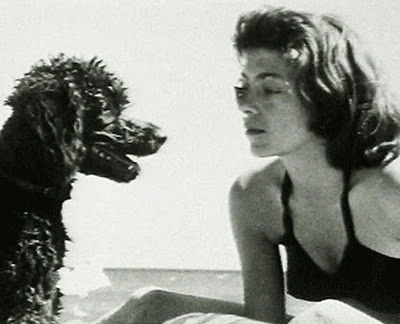Lydia Davis on Joan Mitchell’s Les Bluets
I start with the fact that Les Bluets (The cornflowers) is the painting I think of first when I think of one that has had particular significance in my life. Then I have to figure out why. I am not even certain that Les Bluets was the actual painting I saw. What I did see was a very large white and blue painting by Joan Mitchell in her studio more than twenty years ago, and that is the one I am thinking of.
To get closer to the actual experience of seeing the painting, I first confirm or revise some of my memories of visiting her at Vetheuil, of her strong personality, of my life in Paris. Then I remember more, more than I need to, about where I was living, and how I worked at my writing, driving myself relentlessly to do better and more, with moments of pleasure, but often a hounding sense of obligation, a fear that if I did not work terribly hard something would catch up with me – perhaps the possibility that I did not need to be doing this.
I would take the train out of the city, with its closed spaces, its darkness, to the village of Verheuil, 69 kilometers to the north. A blue gate at the level of the street opened to a climb on foot to the house, a terrace before the front door. The view from the hilltop was of a landscape managed, orderly: poplars by the winding river, and a village on the far bank. The grounds, the rooms in the house, and the mealtimes were also orderly, though I did not give much thought, then, to the value of order. Monet had once lived here, though at the base of the hill, in what was now the gardener’s cottage. His first wife, Camille, was buried in a cemetery beyond the garden.
Excerpt from the January 1996 issue of Artforum. Continue reading here. See a previous post on Les Bluets here.





